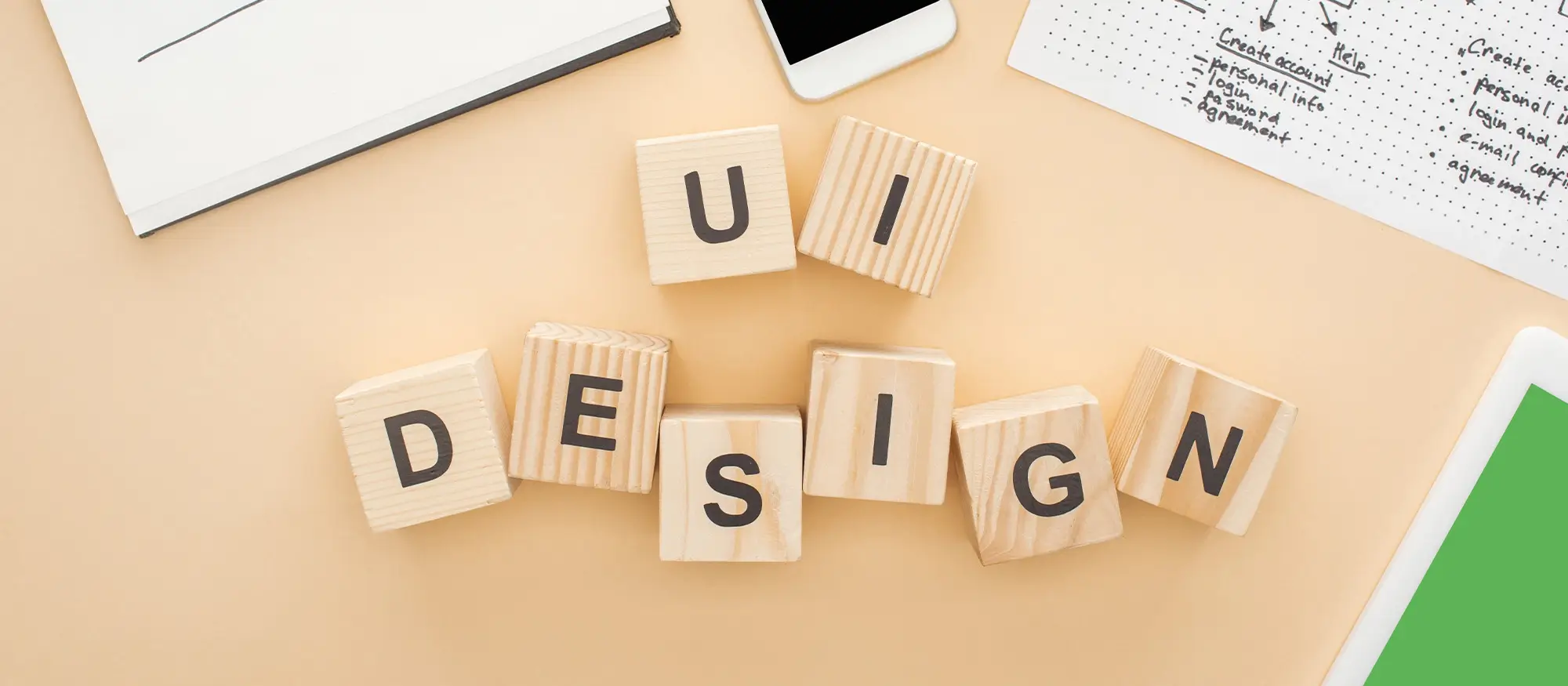Gutenberg editor unleashed: Transforming WordPress content creation
Looking for Creative Inspiration?
⭐⭐⭐⭐⭐
Explore Over 2,000 Patterns, 164 Layouts, and 14,000+ Icons with MaxiBlocks!👇

Introducing Gutenberg: A content creation revolution for WordPress
WordPress’s Gutenberg editor isn’t just a facelift – it’s a game-changer for content creation. This modern tool replaces the classic editor with a block-based approach, fundamentally transforming how you build your website.
Blocks: Building your website like lego
Imagine building your website with modular blocks – text, images, videos, and more – that you can easily add, arrange, and style. That’s the magic of Gutenberg! This intuitive interface makes website design accessible to everyone, regardless of technical expertise.
Beyond aesthetics: Efficiency and user engagement
The benefits of Gutenberg go beyond beautiful design. It streamlines the entire content creation process, boosting your productivity. Need to add a call to action or embed a social media feed? Simply drag and drop the corresponding block.
By embracing Gutenberg, you can ensure your WordPress site stays fresh, relevant, and competitive in the ever-evolving digital landscape.
From TinyMCE to blocks: A look at WordPress editor
The landscape of WordPress content creation has undergone a significant shift with the introduction of the Gutenberg editor. Let’s delve into the classic editor, TinyMCE, and how Gutenberg revolutionized the process.
The familiar face: TinyMCE editor
The classic editor, often referred to as TinyMCE, offered a comfortable, WYSIWYG (What You See Is What You Get) experience. Think of it as a simplified word processor built right into WordPress. It provided a basic toolbar for formatting text, adding images, and embedding media. This user-friendly approach made it ideal for beginners to jump right into content creation.
However, TinyMCE had limitations, particularly when it came to intricate designs and complex content structures. Creating custom layouts often involved shortcodes and HTML editing, which could be a barrier for those without coding knowledge.
Gutenberg: The block revolution
Named after Johannes Gutenberg, the inventor of the printing press, the Gutenberg editor ushered in a new era of content creation. Released in 2018 with WordPress 5.0, it introduced a block-based approach.
Imagine each piece of content – text, image, video, or button – as a separate building block. With Gutenberg, you can edit, move, and customize these blocks individually. This modular system empowers users to design posts and pages with greater flexibility and creativity.
Beyond simplicity: The advantages of Gutenberg
- Flexibility and customization: Gone are the days of limited design options. Gutenberg allows for individual styling and positioning of each block, offering more control over layouts without needing to touch code.
- Rich content made easy: Embedding multimedia and complex elements is a breeze. Gutenberg provides specialized blocks for various content types, making it seamless to integrate images, videos, tables, and more.
- Mobile-friendly editing: The block editor offers a smooth mobile editing experience, allowing you to manage content on the go with ease.
- Accessibility focus: Gutenberg prioritizes accessibility with ongoing updates to enhance usability for individuals with disabilities.
- Future-proofing content: The block-based approach lays the groundwork for full site editing and future WordPress innovations, ensuring your content stays relevant.
Learning curve and community support
The transition from TinyMCE to Gutenberg wasn’t without challenges. Long-time users faced a learning curve adapting to the new interface. Additionally, initial compatibility issues with some themes and plugins arose. However, the WordPress community has been instrumental in providing resources, tutorials, and updates to ease the transition. This highlights WordPress’ commitment to user support and ongoing innovation.

A streamlined workspace: The Gutenberg interface & user experience
At its core, Gutenberg prioritizes ease and efficiency. The clean, minimalistic interface minimizes distractions and keeps the focus on crafting compelling content. Upon opening Gutenberg, you’ll be greeted by a blank canvas, inviting you to start typing or adding blocks. The interface is neatly segmented: an editing area for adding and arranging blocks, and a settings panel for block-specific or document-wide adjustments.
The user experience revolves around intuitive interaction. Whether you’re a seasoned developer or a WordPress newbie, Gutenberg’s gentle learning curve arises from its intuitive layout and context-sensitive block options. Tooltips and guides offer helpful nudges as you navigate the editor’s features, ensuring a smooth content creation journey.
Unlocking power: Key Gutenberg functionalities
- Block types: Gutenberg’s treasure trove of block types is a game-changer. These blocks, encompassing everything from fundamental text and images to advanced elements like tables, buttons, and embeds, offer immense flexibility. Each block comes with customization options for size, color, alignment, and more, creating a consistent and visually cohesive look across different themes and devices.
- Drag-and-drop magic: Say goodbye to complex code manipulation for layout design! Gutenberg’s intuitive drag-and-drop functionality allows you to effortlessly move blocks up and down, or even arrange them into columns and groups. This visual approach to structuring content empowers users to craft intricate page layouts or design posts with unique flows – all without writing a single line of code.
- Real-time preview: See what you get: No more guesswork or back-and-forth checking! Gutenberg’s real-time preview feature is a true gem. As you build your content in the editor, you can simultaneously see how it will appear on the front-end of your website. This invaluable tool ensures what you create is exactly what your audience will experience, streamlining the editing process and guaranteeing the desired visual outcome for your content.
A powerful evolution in content creation
The Gutenberg editor marks a significant leap forward for WordPress content creation. Its user-friendly interface, coupled with powerful features like diverse block types, drag-and-drop capabilities, and real-time preview, empowers users to craft engaging and visually stunning websites with ease. As the WordPress community continues to refine and embrace Gutenberg, its role as an indispensable tool in web design and content strategy will undoubtedly continue to flourish.
Gutenberg and WordPress block themes
Block themes are a new breed of WordPress themes designed specifically for the Gutenberg editor. They leverage the power of blocks to control every aspect of your website’s design, from headers and footers to sidebars and content areas. This creates a seamless workflow where editing and design happen within the same interface.
Gutenberg’s features like drag-and-drop block placement and real-time preview shine even brighter with block themes. You can instantly see the effects of your design choices without needing to switch between a theme customizer and the editor. Additionally, block themes often come pre-loaded with custom blocks tailored to their specific design aesthetic, further streamlining the design process.
Accessing and utilizing templates:
- Open the Gutenberg editor and click the “+” icon to add a new block.
- Search for “Templates” in the block search bar.
- You’ll see a variety of pre-designed templates categorized by section (e.g., headers, footers, posts).
- Choose a template that aligns with your design needs and customize it using the available block settings and options.
Benefits of block-based content layout:
- Consistency: Blocks ensure consistent design across your website. Changes made to a single block can be easily applied to all instances of that block, maintaining a cohesive visual identity.
- Ease of use: Even users with no coding knowledge can create beautiful and functional websites using blocks. The drag-and-drop functionality and intuitive editing options make it easy to experiment with layouts and achieve your desired design.

What is Full Site Editing (FSE)?
Imagine being able to edit your entire website, from headers and footers to sidebars and content areas, directly within the familiar Gutenberg interface. That’s the power of FSE. It leverages blocks as the fundamental building blocks for your entire website, allowing you to create a cohesive and consistent design experience.
Benefits of Full Site Editing:
- Unprecedented design control: FSE empowers you to take complete control over your website’s layout and structure. You’re no longer limited by pre-defined templates; you can customize every element using the intuitive block interface.
- Streamlined workflow: Gone are the days of juggling multiple tools and interfaces for design and content management. FSE integrates everything into Gutenberg, creating a seamless workflow that saves you time and effort.
- Enhanced flexibility: Blocks offer unmatched flexibility when it comes to website design. You can easily rearrange, add, or remove blocks to create unique and dynamic layouts that perfectly match your vision.
- Improved cohesiveness: With FSE, maintaining a consistent design across your entire website becomes effortless. Changes made to a single block can be applied globally, ensuring a unified visual identity for your brand.
- Easier collaboration: FSE opens doors for improved collaboration between designers and developers. Designers can create block templates that developers can easily customize and integrate into the website, fostering a more streamlined workflow.
Unlocking the potential of FSE
While FSE is still under development, several key features are already available:
- Global styles: Define color palettes, fonts, and typography settings that apply to your entire website.
- Block templates: Create reusable block layouts for headers, footers, and other website sections, ensuring consistency throughout your site.
- Theme.json file: This file acts as the central hub for FSE data, storing information about global styles, block templates, and website structure.
The future of WordPress web design
FSE marks a significant shift in how websites are built with WordPress. As FSE matures, we can expect even more features and functionalities, such as:
- Advanced block editing: Capabilities like inline editing and responsive design adjustments directly within blocks.
- Third-party block library: A wider range of pre-designed blocks and templates from developers, like MaxiBlocks, expanding design possibilities.
- Full theme customization with blocks: Imagine building custom themes entirely using blocks, offering even greater design freedom.
With FSE, WordPress is poised to become an even more powerful and user-friendly platform for website creation. By empowering users to take control of their website’s design with intuitive block-based editing, FSE opens doors for a new era of creativity and innovation in the world of WordPress.

Customizing block templates
Block templates, a cornerstone of Full Site Editing (FSE) in WordPress, offer a fantastic starting point for building your website. But what if you want your website to truly stand out and reflect your unique brand identity? Here’s how you can customize block templates to make your website sing your brand’s song.
Most block templates come pre-populated with various blocks. Each block offers its own set of customization options, allowing you to tweak things like:
- Colours: Align text, background, and button colors with your brand palette.
- Fonts: Choose fonts that match your brand’s personality and ensure readability.
- Images & videos: Replace placeholder images and videos with visuals that embody your brand aesthetic.
- Spacing & padding: Adjust spacing and padding to create a visually balanced and comfortable layout for your audience.
- Content & tone: Revise pre-populated text to reflect your brand voice and messaging.
Mastering global styles:
FSE empowers you to define global styles that set the foundation for your entire website’s look and feel. Within the Gutenberg editor, access the “Styles” panel and create a style guide for:
- Colour palettes: Define primary, secondary, and accent colors that represent your brand.
- Typography: Choose fonts for headings, body text, and buttons, ensuring consistency across your website.
- Spacing & layout: Set default margins, padding, and line heights for a cohesive design.
By applying your brand’s visual identity through global styles, you elevate block templates from generic to distinctly yours.
Refining block layouts:
Block templates often come with a predefined layout. While these layouts offer a solid base, don’t be afraid to experiment!
- Rearrange blocks: Don’t like the order? Drag and drop blocks within the template to create a layout that flows naturally with your content and brand message.
- Add or remove blocks: Need to showcase your team or highlight client testimonials? Include additional blocks to enhance your website’s functionality and brand storytelling.
- Utilize Block Variations: Some blocks offer pre-designed variations with different styles and layouts. Explore these variations to find one that aligns best with your brand identity.
Embrace advanced customization techniques:
For users comfortable with code, FSE offers even more control over block templates:
- CSS Classes: Apply custom CSS classes to individual blocks for even more granular control over styling.
- Custom block templates: With some coding knowledge, you can create entirely new block templates tailored specifically for your brand’s unique design needs.
Enhancing visual appeal with advanced blocks
- Icon blocks: Add a touch of personality and visual interest to your website with icon blocks. Choose from a wide range of pre-designed icons or upload your own to showcase services, features, or highlight key information.
- Team member blocks: Introduce your team and showcase their expertise with dedicated team member blocks. These blocks allow you to include photos, names, job titles, and even social media links, fostering a sense of connection with your audience.
- Pricing table blocks: Clearly present your pricing plans or service options with visually compelling pricing table blocks. These blocks let you compare features, highlight benefits, and showcase different pricing tiers in a clear and organized manner.
- Progress bar blocks: Visually represent your progress, achievements, or skillsets with progress bar blocks. These blocks are perfect for showcasing website traffic growth, team member expertise, or progress towards a specific goal.
- Social share blocks: Encourage visitors to share your content on their social media platforms with social share blocks. These blocks make it easy for users to spread the word about your website and content, increasing your online reach.
Building interactive elements
- Form blocks: Capture leads, collect feedback, or conduct surveys with form blocks. These blocks offer various form elements like text fields, dropdowns, and checkboxes, allowing you to gather valuable information from your audience.
- Call to action (CTA) blocks: Motivate visitors to take action with clear and compelling CTA blocks. You can use these blocks to encourage users to subscribe to your newsletter, download a white paper, or contact you for a quote.
- Testimonial blocks: Showcase positive feedback from satisfied clients with testimonial blocks. These blocks can increase trust and credibility with potential customers, highlighting the value you offer.
Advanced functionality for specific needs
- WooCommerce blocks: If you have an online store powered by WooCommerce, you can leverage specific blocks like product grids, product categories, and shopping carts to seamlessly integrate your eCommerce functionality into your website design.
- Custom post type blocks: Developers can create custom blocks tailored to specific needs. This allows for functionalities beyond the standard blocks, catering to unique website requirements (e.g., displaying a portfolio of creative work, showcasing event calendars, etc.).
By adopting Gutenberg, you ensure your WordPress site stays fresh, relevant, and competitive in the ever-evolving digital landscape. This powerful tool empowers you to create beautiful and engaging websites that will capture your audience’s attention.

Gutenberg editor unleashed: FAQs
1. What is the Gutenberg editor in WordPress?
The Gutenberg editor is a block-based content creation tool in WordPress, replacing the classic TinyMCE editor. It introduces a revolutionary way to build and design web pages using modular blocks for text, images, videos, and more.
2. How does Gutenberg differ from the classic WordPress editor?
Unlike the classic editor, which provided a WYSIWYG experience similar to word processors, Gutenberg uses a block-based approach. This allows for greater flexibility and control over content layout and design.
3. Can I still use the classic editor with WordPress?
Yes, you can still use the classic editor by installing the Classic Editor plugin. However, embracing Gutenberg offers a more modern and efficient content creation experience.
4. What are some key advantages of using Gutenberg?
Gutenberg improves site design flexibility, allows for easy embedding of rich content, enhances mobile editing, focuses on accessibility, and lays the foundation for future WordPress innovations.
5. Are there any challenges in transitioning to Gutenberg?
Some users may face a learning curve and compatibility issues with themes or plugins. However, the WordPress community offers extensive resources and support to facilitate this transition.
6. How does the Gutenberg interface enhance content creation?
Gutenberg’s clean, intuitive interface minimizes distractions, offering an editing area for block arrangement and a settings panel for block and document adjustments, simplifying the content creation process.
7. What unique functionalities does Gutenberg offer?
Key features include a wide variety of block types for all content elements, drag-and-drop for easy layout design, and real-time preview to see changes as they’re made.
8. What are block themes in WordPress?
Block themes are designed specifically for the Gutenberg editor, allowing for block-based control over all aspects of website design, from headers and footers to content areas, streamlining the design process.
9. How can I access and use Gutenberg templates?
Templates can be accessed by clicking the “+” icon in Gutenberg, searching for “Templates”, and selecting from pre-designed layouts for various website sections.
10. What benefits do block-based content layouts offer?
Blocks ensure design consistency across your website, are easy to use without coding knowledge, and allow for flexible layout experimentation.
11. What is Full Site Editing (FSE)?
FSE expands Gutenberg’s block approach to the entire website, allowing for direct editing of headers, footers, and other areas within the Gutenberg interface for a cohesive design experience.
12. How does FSE change website design with WordPress?
FSE offers unprecedented design control, a streamlined design and content management workflow, enhanced flexibility, and improved design cohesiveness and collaboration opportunities.
13. How can I customize block templates to match my brand?
Customize block templates by adjusting colors, fonts, images, spacing, and content to align with your brand identity, leveraging global styles for a consistent look.
14. What are some advanced blocks available in Gutenberg?
Advanced blocks include icon blocks, team member blocks, pricing table blocks, progress bar blocks, and social share blocks, enriching visual appeal and interaction.
15. How can Gutenberg help build interactive website elements?
Gutenberg supports form blocks, CTA blocks, and testimonial blocks, enhancing website interactivity and engagement with your audience.
16. What specific functionalities do WooCommerce blocks offer?
WooCommerce blocks allow seamless integration of eCommerce features, such as product grids and shopping carts, into your website design.
17. Can developers create custom post type blocks?
Yes, developers can create custom blocks to cater to specific website needs, offering functionalities beyond the standard blocks provided by Gutenberg.
18. Is Gutenberg mobile-friendly?
Gutenberg is designed with mobile editing in mind, providing a smooth experience for managing content on the go.
19. How does Gutenberg prioritize accessibility?
Gutenberg is continuously updated to improve accessibility, ensuring that content creation is inclusive for individuals with disabilities.
20. What is the future of Gutenberg and WordPress?
As Gutenberg evolves, it will introduce more advanced editing capabilities, expand the block library, and enhance full site customization, solidifying WordPress as a powerful and user-friendly platform for web design.
WordPress itself
Official Website
wordpress.org – This is the official website for WordPress, where you can download the software, find documentation, and learn more about using it.
WordPress Codex
codex.wordpress.org/Main_Page – This is a comprehensive documentation resource for WordPress, covering everything from installation and configuration to specific functionality and troubleshooting.
WordPress Theme Directory
wordpress.org/themes – The official WordPress theme directory is a great place to find free and premium WordPress themes. You can browse themes by category, feature, and popularity.
maxiblocks.com/go/help-desk
maxiblocks.com/pro-library
www.youtube.com/@maxiblocks
twitter.com/maxiblocks
linkedin.com/company/maxi-blocks
github.com/orgs/maxi-blocks
wordpress.org/plugins/maxi-blocks